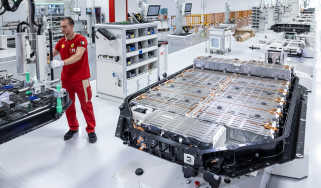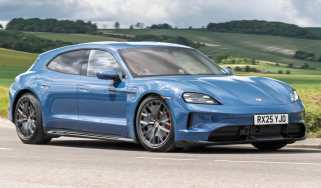Honda Civic Type R (FN2) – the car world's greatest misses
Its lineage contains some hot hatch greats, but the late-noughties Civic wasn’t one of them

It’s a somewhat risky move criticising a Honda with the Type R badge, given the passionate following the red ‘R’ has. When it comes to the Civic, it’s not something I’m usually inclined to do anyway. After all, who doesn’t love the forbidden fruit of the wild EK9, the historical significance of the ubiquitous and beloved EP3, or the class-crushing excellence of first the FK8 and now the FL5?
However, it’s the last of the naturally aspirated Type Rs we need to have a chat about: the FN2. As a final hurrah for the brilliant Honda K20 engine, reworked to provide a more flexible, torquier delivery, this version should by now have taken its place as a solid-gold modern classic. Yet a glance at the classifieds proves this emphatically is not the case. But why?
> Mitsubishi Lancer Evolution 10 – the car world's greatest misses
I can still clearly recall writing the initial road test on the FN2 for a weekly car magazine. There was a lot of excitement surrounding the model at the time. Sure, the styling must have bemused the regular Civic’s elderly core audience, and the interior was plain weird, but the R version had a K20 hooked up to a six-speed manual, plus gorgeous Type R bucket seats too, so really, who cared? There was a deeply troubling line in the press pack though. It read ‘torsion beam rear suspension’, and as anyone who knows Hondas or indeed engineering matters in general can testify, this was fundamentally a retrograde step.
Unlike previous Civic Type Rs, the FN2 was a European model. In Japan, a totally different Type R was now available in the form of the FD2, which had a far more conventional exterior, a more powerful K20 (as usual) and a multi-link rear end (again, as usual). The FN2 was built at Swindon and was exported to various European countries, with the UK being the biggest market. Confusingly, some time after the car’s launch in 2007 it was then sent over to Japan as the ‘Type R Euro’.
Did we obsess too much over that rear beam? After all, what suspension set-up links 205 GTI, Clio Williams and 306 Rallye? Exactly. Yet it’s worth considering that most of those French classics weigh significantly less than a ton; the FN2 hit the scales at 1267kg, and the control needed for a hot hatch while supporting that kind of mass did not make for a comfortable car. Renault Sport just about managed it by the time of the Phase 2 Mégane 250, but even then you’d never class it as having the same ride sophistication as a Mk5 Golf GTI.
That first press-fleet FN2 was ridiculously firm. It hopped, skipped and jumped down a B-road, driving itself and the driver to distraction. It didn’t feel quite as fast as it should have, either. Sure, a widening of the VTEC band helped, but with 198bhp it was no more powerful than the old EP3 despite being a good deal heavier. These days outright speed often seems irrelevant, but back then, with class limits being pushed, the FN2 just felt off the pace. It transpired that the damper settings on the road test car weren’t right (an innocent mix-up or actions with a certain objective?) but drives in later cars revealed a similarly wooden feeling. It just wasn’t that good.
It wasn’t until two generations later, with the 2017 FK8, complete with a multi-link rear once again, that the Type R truly reached for the stars. Maybe it’s just a coincidence…
This story was first featured in evo issue 328.



